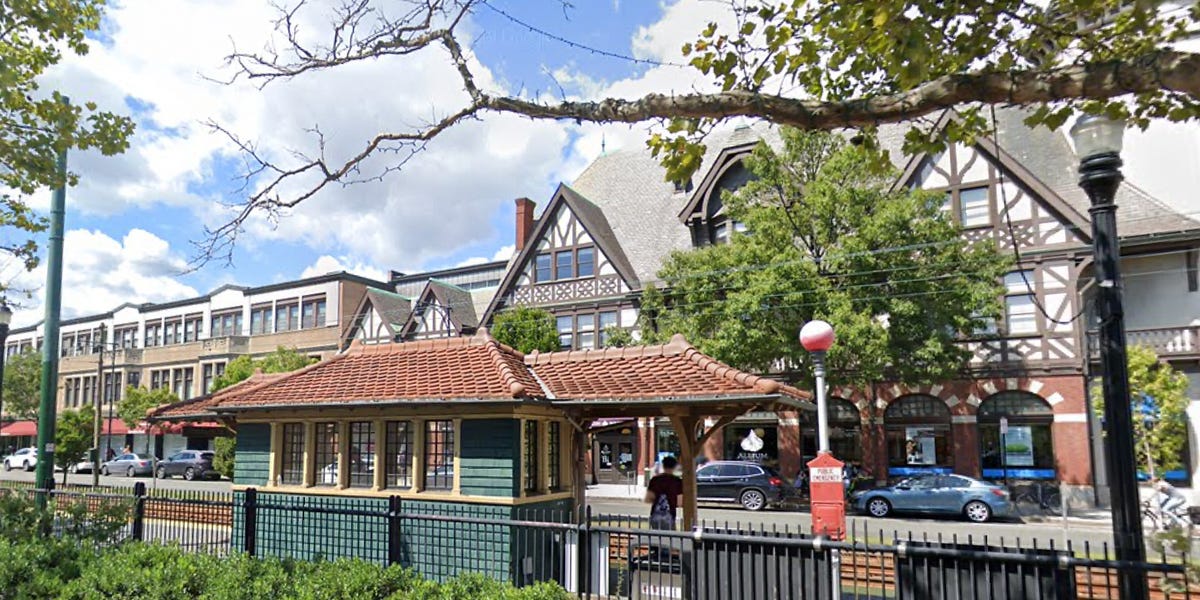sean99090900
Active Member
- Joined
- Jan 18, 2024
- Messages
- 194
- Reaction score
- 875
Some good progress on 13 Warwick st
Looks like the YMCA (located on Highland near School st) will be building a new facility on a new property. I’ll be curious to learn more. Anyone have any inside knowledge?

Somerville YMCA announces search for a new facility
www.thesomervilletimes.com
Looks like we’ve got some massing studies. Seems like the Y has agreements to acquire two properties: one on Highland and one on School. Seems like we’re going to have another “wraparound” situation like the Lab/condo situation on Webster.
Agreed, especially since it’s one of the very few times that the residents are basically screaming at Somerville to push the development forward - they’re being very YIMBY for once and seeing no results from that yet is a letdown.I really liked these concepts from the Gilman Square Station Area Plan. I'd love to see Gilman become a vibrant square, and it's so disappointing that there hasn't been more action on this.
It also really sucks that the previously planned Medford Street headhouse was removed from the GLX when the stations were value engineered. It would've been perfect if the station entrance/exit was right at the intersection of Medford and Pearl, where the civic space is (was?) planned. We got this, instead of getting this:
View attachment 57190
It kinda feels weird to complain since it took so long to get the GLX over the finish line, and I'm thankful that it got done at all. That being said, Gilman Square could be freaking awesome and it's just... not. Hopefully that changes sooner rather than later.
It also really sucks that the previously planned Medford Street headhouse was removed from the GLX when the stations were value engineered. It would've been perfect if the station entrance/exit was right at the intersection of Medford and Pearl, where the civic space is (was?) planned. We got this, instead of getting this:
View attachment 57190
It kinda feels weird to complain since it took so long to get the GLX over the finish line, and I'm thankful that it got done at all. That being said, Gilman Square could be freaking awesome and it's just... not. Hopefully that changes sooner rather than later.

At some point we really need to stop the shell game of "tagging the developers" for rebuilding T stations.I hear you, I really do, and it is pretty bare bones how the GLX station and platforms turned out. A few years ago I read what I thought was a good article on just this point and how tradeoffs are balanced on infrastructure projects. The author isn't from Boston, but I think makes some really good points on both public responsibility and trying to avoid mission creep:

Fancy stations make quality mass transit harder
Stop wasting money in dumb, obvious wayswww.slowboring.com
On the original Union Square design:
That looks cool! But by making the building so big that you need escalators to access it and elevators for ADA compliance (rather than basic ramps) you generate $2 million in costs. In total they ended up with “two levels of exterior plazas with connecting ramps and outdoor seating and plantings. In addition to these external elements, the station included a head house, bicycle storage, entryway, lobby, concourse, two elevators, two escalators, two bathrooms, employee lounge, fare vending, fare arrays, canopies, and mechanical rooms for all of the different systems.”
This just leads to a huge explosion in costs. Electrical alone costs over $5,000 per square meter so when you make the stations really big they get really expensive.
After the project almost fell apart, a new team came in with a mandate to cut station costs. They cut the total cost by 70 percent, mostly by just making the stations smaller — 91 percent smaller. The Transit Costs Projects people estimate that they saved $50 million just on electrical work.
[...]
By dropping the fancy stations, Boston went from “the Green Line Extension is too expensive to build” to “hey, actually we can build this.”
Maybe the answer is tagging some of the developers to build better connectivity to the Green Line stations, which can provide the true public realm benefit.
While I agree that we shouldn’t be overbuilding stations, we shouldn’t be underbuilding them either. I don’t think that B and C line stations would be acceptable in most cases.The outdoor minimalist stations on the B and C are fine for most use cases.
Eh, the lack of good overhead shelter and accessibility on so many of those is unacceptable. Otherwise, agreed. The GLX stations are fine.The outdoor minimalist stations on the B and C are fine for most use cases.
That article gives a reasonable explanation of the exploding costs (and the Transit Costs Project he links to is fantastic resource) but I think he's missing a lot of subtlety in station planning. He's painting a lot of those amenities as completely frivolous, but they're not. They actually boost ridership. It should be more a question of whether that ridership boost is worth the cost. For a really rough example, you might consider an amenity is "worth it" at a cost of $50k per weekday rider.** Then $5m for, say, bike storage would be worth it if you thought that would get you an extra 100 riders per weekday at that station (though obviously you'd try to do it cheaper).I hear you, I really do, and it is pretty bare bones how the GLX station and platforms turned out. A few years ago I read what I thought was a good article on just this point and how tradeoffs are balanced on infrastructure projects. The author isn't from Boston, but I think makes some really good points on both public responsibility and trying to avoid mission creep:

Fancy stations make quality mass transit harder
Stop wasting money in dumb, obvious wayswww.slowboring.com
On the original Union Square design:
That looks cool! But by making the building so big that you need escalators to access it and elevators for ADA compliance (rather than basic ramps) you generate $2 million in costs. In total they ended up with “two levels of exterior plazas with connecting ramps and outdoor seating and plantings. In addition to these external elements, the station included a head house, bicycle storage, entryway, lobby, concourse, two elevators, two escalators, two bathrooms, employee lounge, fare vending, fare arrays, canopies, and mechanical rooms for all of the different systems.”
This just leads to a huge explosion in costs. Electrical alone costs over $5,000 per square meter so when you make the stations really big they get really expensive.
After the project almost fell apart, a new team came in with a mandate to cut station costs. They cut the total cost by 70 percent, mostly by just making the stations smaller — 91 percent smaller. The Transit Costs Projects people estimate that they saved $50 million just on electrical work.
[...]
By dropping the fancy stations, Boston went from “the Green Line Extension is too expensive to build” to “hey, actually we can build this.”
Maybe the answer is tagging some of the developers to build better connectivity to the Green Line stations, which can provide the true public realm benefit.
I dont even understand it. Is it superimposed on something really old or are they proposing scrapping the school st. station entrance?The more I look at this the more I hate it. The bridge is on the wrong side to interact with the square, there is NO effort to create a "neighborhood center," there is zero depth to the buildings, and the courtyards FACE the ROW which is already deflecting both commuter+GL noise directly at them. What architect thought this was acceptable?
View attachment 57391
